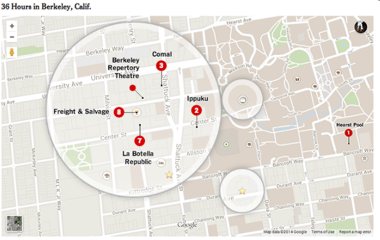| Google Introduces Signed-In Maps |
| Written by Alex Armstrong | |||
| Thursday, 30 October 2014 | |||
|
The latest feature in Google's JavaScript API sounds attractive - unless you have problems with Google knowing all your location-related preferences. The announcement on the Google Geo Developers blog has the catchy title No map is an island. It points out that while there are now around 2 million active sites that have Google Maps embedded they store data independently, As Ken Hoetmer, Product Manager for Google Maps explains: When I look for a place to eat on Zagat, I can’t see how far away it is from work. When I look at a travel map in the New York Times, I can’t save those places in order to navigate to them later. The new feature, called attributed save, aims to overcome this problem by creating an integrated experience between the apps you use that have map content and Google Maps and all it requires is that users sign in. With the new Google Maps JavaScript API v3 adding:
to the source url gives your end users the option to sign into the map with their Google account. When they do so, users will receive a map built for them, in the context of your app. Their saved places, including home and work addresses (if set by the end user) as well as other relevant places, will appear automatically on their map, which as Hoetmer puts it, provides "a layer of context that anchors your content and makes it stand out even more". This example illustrates the idea using the NYT's 36 hours travel column:
The feature also means that devs can enable deep links into mobile applications. For instance, users can save a place from a desktop app such as Zagat.com, open up the place on Google Maps on their Android device, and deep link directly into your Android app. Google has launched attributed save across all embedded maps with attribution and linkback parameters inferred automatically from the domain and referrer of the host site. If you’re using the Google Maps Embed API, you can customize the source and link back parameters. There is also a save widget that you can add to your map to make it easy for users to save locations to the central database. The other change introduced by the signed in maps experience is that the JavaScript Maps API is no longer cookieless when loaded from maps.googleapis.com. The signed-in version of the JavaScript Maps API now does rely on cookies to detect the end user’s signed-in state. This could present a problem for users who are cookie phobic. This all sounds great and it makes sense to allow users to take all of the locations that have previously been stored in app silos and put them all together into one big map data pool. The only downside is that the pool is owned by Google and some users might not like the idea of letting Google have access to so much personal geo information. Each location stored is not only specific to the user but to the app that that was in use. What this means is that it is easy to infer what the nature of the location might be. It seems you can have convenience or you can have privacy. It might just be that many users prefer their maps to be islands.
More InformationRelated ArticlesAn Easy Way To Embed Google Maps Google Maps API for Android Updated
To be informed about new articles on I Programmer, install the I Programmer Toolbar, subscribe to the RSS feed, follow us on, Twitter, Facebook, Google+ or Linkedin, or sign up for our weekly newsletter.
Comments
or email your comment to: comments@i-programmer.info |
|||
| Last Updated ( Thursday, 30 October 2014 ) |



